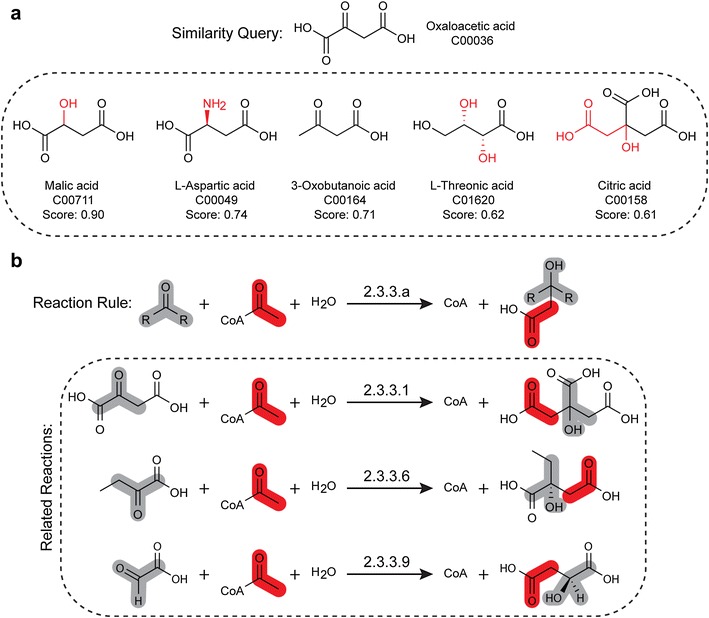Fig. 3.

a Chemical similarity can be quantified by comparing common structural features. For example, SIMCOMP is an algorithm that calculates a similarity score by determining the maximum common substructure between two compounds. SIMCOMP can be used to rank all compounds in the KEGG database against a single queried compound, in this case oxaloacetic acid, by similarity score. The structural dissimilarities (substitutions and additions marked in red) of five familiar compounds relative to oxaloacetic acid are highlighted to provide context to the calculated similarity score. b Generalized reaction rules describe enzymatic reactions where the reactants share structural motifs and undergo related transformations within an EC class. Reaction rule 2.3.3.a is one of 86 BNICE generalized reaction rules described by Henry et al. [70]. Examples of enzymatic reactions described by this reaction rule include citrate (Si)-synthase (2.3.3.1) that forms citrate from oxaloacetate, 2-ethylmalate synthase (2.3.3.6) that forms 2-ethylmalate from 2-oxobutyrate, and malate synthase (2.3.3.9) that forms malate from glyoxylate. Motifs of the constituent reactants are highlighted in grey (aldehyde or ketone group) and red (acetyl group), and the corresponding atoms are identified in the products. Databases can be expanded, as is the case with MINEs and ATLAS, by applying reaction rules to metabolites that share a common motif
